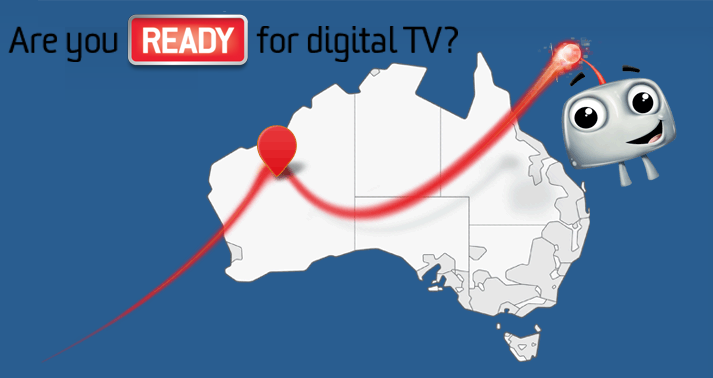
Tomorrow, December 3, Sydney joins most of the rest of Australia in switching to Digital-only television, marking the end of the analog TV era. With this switch, the Digital Switchover Taskforce estimates that some 8.7 million households will have made the switch to digital TV, which began over a decade ago.
For those who aren’t across the switchover or its reasons, there are a number of benefits to the new digital landscape, including:
- Improved viewing, with more channels, an electronic program guide, and high definition broadcasting.
- Overseas, digital-only usage is on the rise, meaning its easier for digital-only content to be broadcast here.
- Freeing up broadcast space, meaning there’s space for other services, including enhanced mobile phone and other services.
After Sydney, only Melbourne and areas of remote and central eastern Australia remain on analog television, with their switchover to complete next week on December 10.
If you’re needing help making the switch, or you have family members who mightn’t be so technically inclined, the government has also released the mySwitch app to help. Check it out:




Goodbye analogue tv in Sydney.
What happens to the freed up bandwidth?
Will it be available for digital TV… more channels or more HD TV?
Or is it going to be used by some other industry?
The Government has already put some of the bandwidth on the market for use with 4G or LTE services which Telstra, TPG & Optus both bid on and were successful. The remainder comes up for sale within the next 12 to 24 months for extra capacity in Digital Radio & Telecommunications services
Any chance for broadcast HDTV in Australia was sold off to the telcos under the previous government.
What makes that more annoying is that before the TV notworks in Australia went digital multichannel, they actually did broadcast real digital HDTV.
The next stage is what they are calling the channel “restack.” SBS digital in Melbourne which is currently broadcast on UHF 29 will move to VHF 7 with the analog channel 7 being shutdown. This isn’t scheduled until Feb 2014. To use Ballarat in regional Victoria as a better example, their current channels are broadcast on UHF 55, 58, 61, 64 and 67. With that restack in July next year, all channels will be bunched together on UHF 40-44. This process is being repeated around the country to consolidate all frequencies in use below 700MHz (currently referred to as the… Read more »